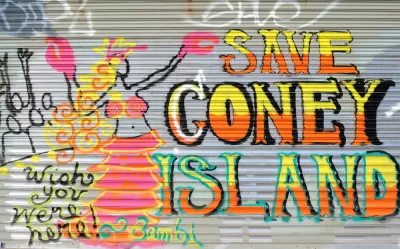The Guardian’s new "Gentrified World" series tackles a fundamental—but tricky—question: How can we measure gentrification?

Cities must be able to understand and measure gentrification in order to prevent displacement, impoverishment, and resegregation, writer Douglas Murphy argues in The Guardian. Rising housing costs are a beginning, but they're not a reliable indicator on their own. In a new Guardian series, "Gentrified World," Murphy surveys an array of variables researchers have identified to pin down gentrification.
Work from NYU, the Voorhees Center, UC Berkeley and UCLA's Urban Displacement Project, and elsewhere has suggested that proximity to transit stops, types of housing, education levels, and population density, as well as cultural phenomena like the presence of coffee shops, are all indicators of gentrification in progress.
But like other social and economic processes, while gentrification happens around the world, it often takes on locally or regionally specific dimensions.
For example, the particular character of American inequality means that race is frequently considered to be a major factor. The late 20th century saw the white middle classes largely abandoning the inner cities, and an increase of white residents is now taken to be a sure sign of gentrification. But this metric can’t apply in less politically segregated contexts.
Ultimately, Murphy posits that the same indicators, however varied, likely can't be applied uniformly everywhere:
The wide variety of research shows that a single, universal measurement of gentrification is probably impossible, with all the fraught political and cultural considerations at work.
Find a more detailed accounting of the various types of evidence—including public perception and the "I know it when I see it" factor—and the importance of data communication in the piece.
FULL STORY: Crime stats or coffee shops? How to spot the world's most gentrified cities

Maui's Vacation Rental Debate Turns Ugly
Verbal attacks, misinformation campaigns and fistfights plague a high-stakes debate to convert thousands of vacation rentals into long-term housing.

Planetizen Federal Action Tracker
A weekly monitor of how Trump’s orders and actions are impacting planners and planning in America.

In Urban Planning, AI Prompting Could be the New Design Thinking
Creativity has long been key to great urban design. What if we see AI as our new creative partner?

King County Supportive Housing Program Offers Hope for Unhoused Residents
The county is taking a ‘Housing First’ approach that prioritizes getting people into housing, then offering wraparound supportive services.

Researchers Use AI to Get Clearer Picture of US Housing
Analysts are using artificial intelligence to supercharge their research by allowing them to comb through data faster. Though these AI tools can be error prone, they save time and housing researchers are optimistic about the future.

Making Shared Micromobility More Inclusive
Cities and shared mobility system operators can do more to include people with disabilities in planning and operations, per a new report.
Urban Design for Planners 1: Software Tools
This six-course series explores essential urban design concepts using open source software and equips planners with the tools they need to participate fully in the urban design process.
Planning for Universal Design
Learn the tools for implementing Universal Design in planning regulations.
planning NEXT
Appalachian Highlands Housing Partners
Mpact (founded as Rail~Volution)
City of Camden Redevelopment Agency
City of Astoria
City of Portland
City of Laramie





























